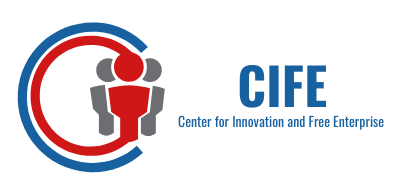In recent years, the healthcare industry has witnessed an ongoing debate surrounding rising drug prices and the role played by various stakeholders. Amidst this discourse, profit-driven Pharmacy Benefit Managers (PBMs) and insurance companies have strategically adopted a messaging campaign, claiming that “patents are the problem.” However, the Center for Innovation and Free Enterprise believes that this narrative serves as a smokescreen, designed to divert attention from the true culprits driving escalating healthcare costs.
PBMs act as intermediaries between insurers, pharmaceutical companies, and pharmacies. Their primary responsibility is to negotiate drug prices, develop formularies, and administer prescription drug programs. Although originally intended to streamline the process and control costs, PBMs have evolved into profit-driven entities, often prioritizing their financial interests over those of patients.
PBMs are currently abusing their role in the marketplace by influencing drug formularies that determine which medications are covered by insurance plans. When negotiating rebates with pharmaceutical manufacturers, PBMs prioritize drugs that offer the highest rebate, rather than focusing on patient outcomes or cost-effectiveness. These secretive rebates are often not passed on to patients, resulting in inflated prices. Moreover, spread pricing, where PBMs charge insurers more for a drug than what they reimburse the pharmacy, exacerbates the problem further. The lack of transparency surrounding PBM practices hinders accountability and prevents true market competition. PBMs operate in a black box, shielded from public scrutiny, making it challenging to address their role in inflating drug prices.
PBMs are attempting to distract you by saying “patents are the problem,” but they know patents are responsible for new medicines. They just don’t want to pay for them. Patents incentivize innovation by granting exclusive rights to new inventions for a set period, while mandating innovators publicly share information about their inventions. This allows more generic drugs to be developed and enter the market after patent protections expire. For a new patent to be granted, the request must be for something new and non-obvious. In fact, today more than 90% of prescriptions for drugs are filled with generics – an increase of nearly 20% from less than four decades ago. Patents continue to be the catalyst for the development of life-saving medicines and cures, innovation, and economic competitiveness.
While the “patents are the problem” message has gained traction, it is crucial to recognize it as a calculated distraction from the true drivers of healthcare costs. Profit-driven PBMs and insurance companies, with their complex pricing practices, lack of transparency, and market dominance, are significant contributors to the escalating prices of prescription drugs. To achieve meaningful reform, it is imperative that policymakers and the public remain vigilant, focusing their efforts on addressing the actual root causes and holding these entities accountable. By advocating for increased transparency, fostering competition, and implementing meaningful reforms, we can pave the way toward a more affordable and patient-centered healthcare system.
